Southern Africa - South Africa, Botswana, Zimbabwe, Zambia, Namibia
August 23 - September 15, 2016
Part Three, Page Two - Hwange National Park, Zimbabwe
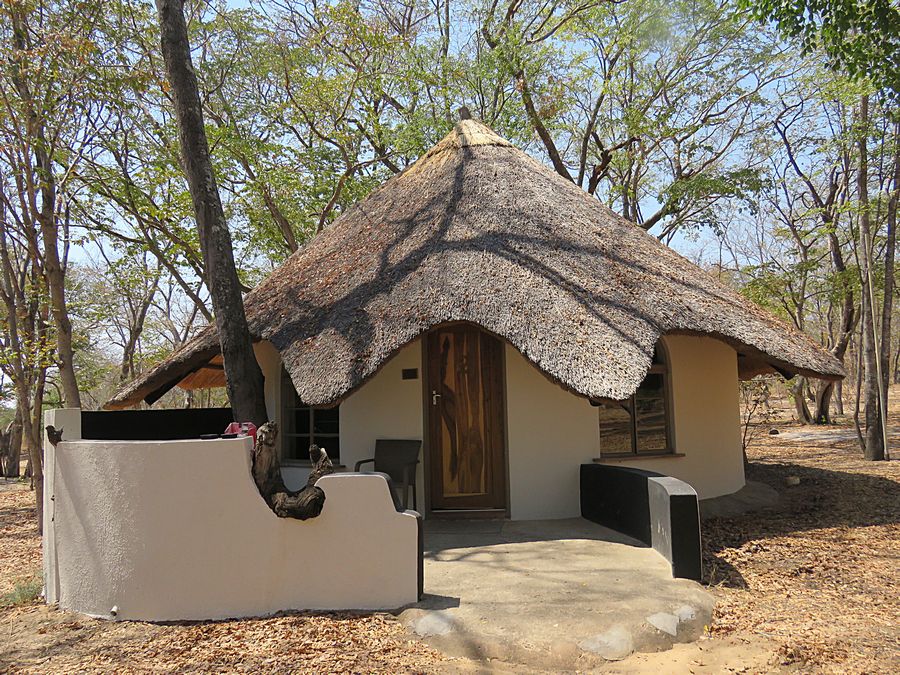
My unit, a rondavel, at Sable Sands Lodge near Hwange N.P.
The rondavel is usually round or oval in shape and is traditionally
made with materials that can be locally found in raw form. Its
walls are often constructed from stones. The mortar may consist
of sand, soil, or combinations of these, mixed with cow dung.
The floor of a traditional rondavel is finished with a dung mixture
to make it hard and smooth. The main roofing elements of a
rondavel are poles taken from tree limbs, which have
been harvested and cut to length. The roof covering is of thatch
that is sewn to poles with grass rope.
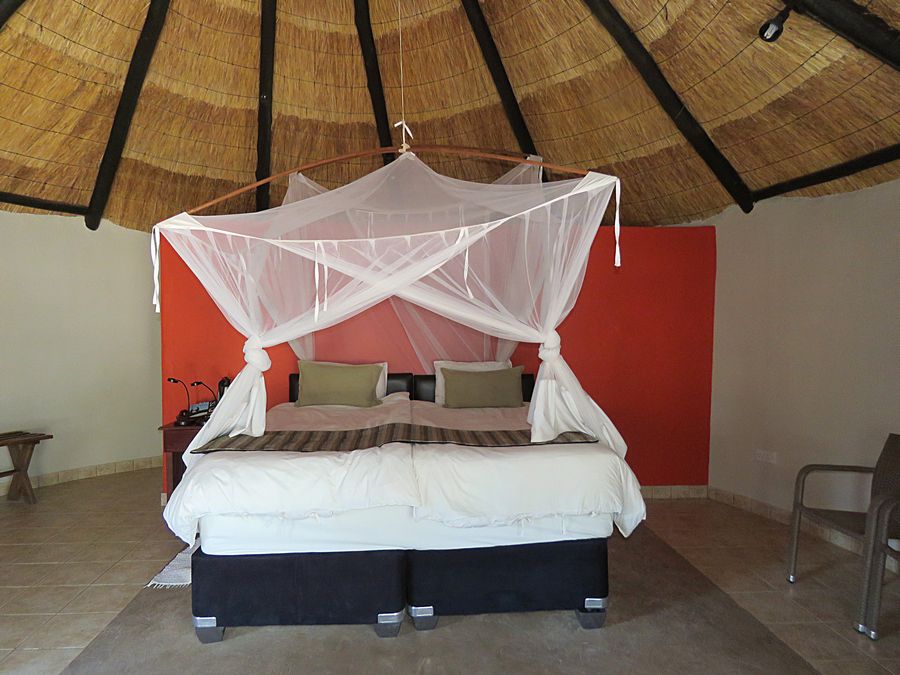
Inside my rondavel. It had a tile floor. The bathroom is behind
the reddish orange wall. Prince Philip stayed in this rondavel
(hut 2) in October 1991. Queen Elizabeth was in rondavel 1.
There was a plaque next to my door that noted his stay.
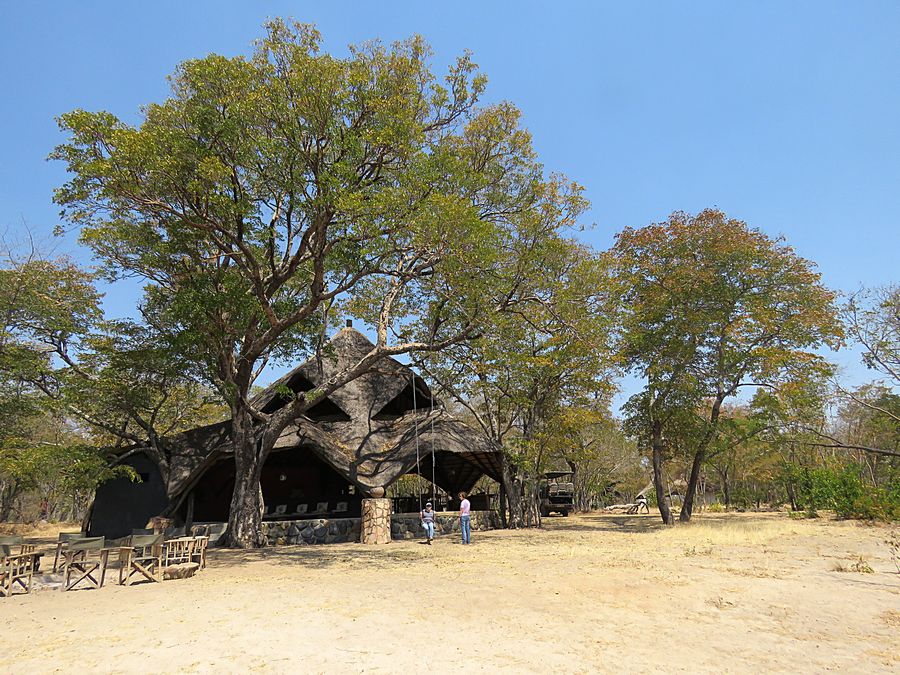
The lounge and dining area of Sable Sands Lodge with
a swing in front. The rondavel units were behind and
to the right of the lounge.

A baboon sneaking a drink of water from the Lodge's small swimming pool.
Baboons scurried around the grounds knowing that they were not
welcome. The owners said it was a constant battle keeping them away
from the pool, clearly a losing battle.

A lilac-breasted roller perched atop a termite mound, one
of their favorite locations.
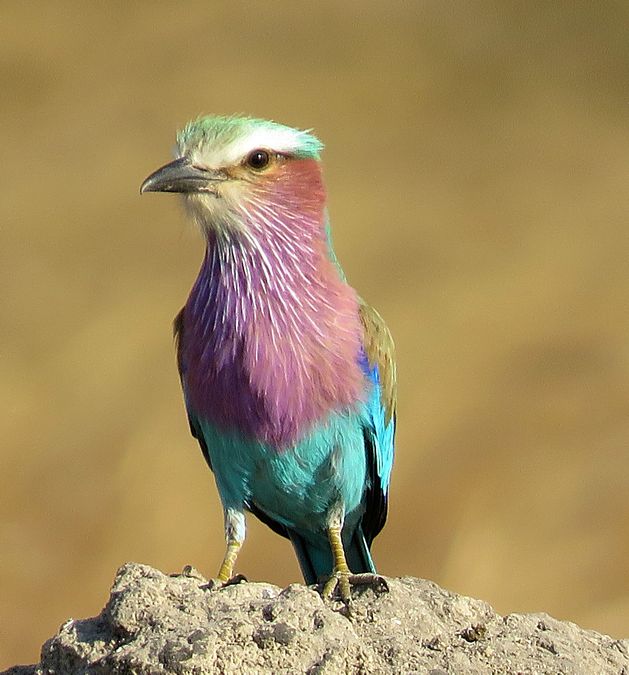
Front view of the lilac-breasted roller on the termite mound

Baby and mom zebras and male impalas at a rapidly drying
up watering hole
near our Sable Sands Lodge.
It is interesting
to see which animals have no problem congregating together.

A baby zebra is called a foal. They have mobility almost immediately.
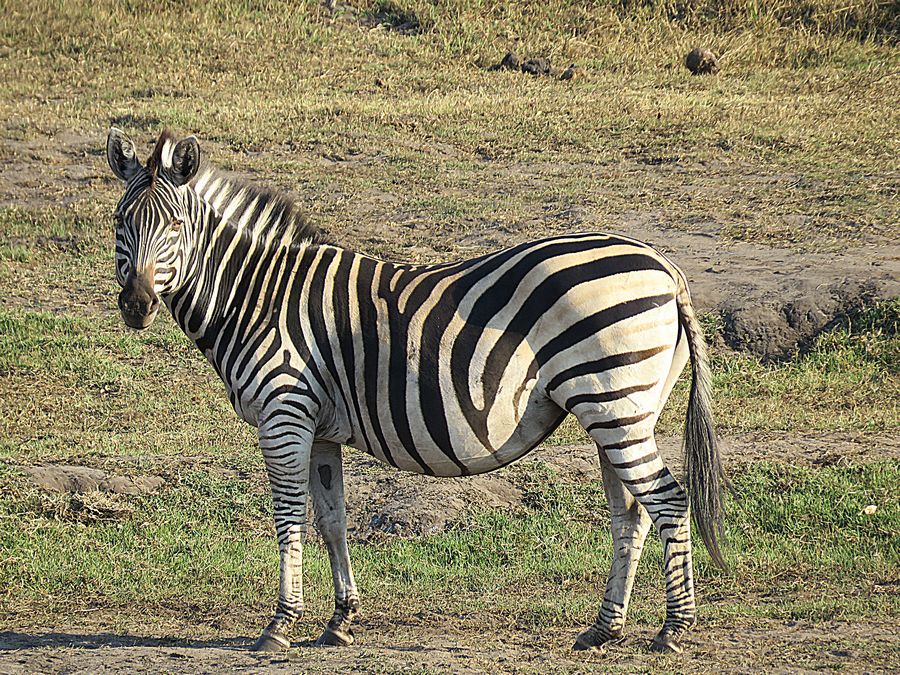
This female zebra is clearly pregnant.
The period of gestation for a zebra is about one year, and each female will
only give birth to one foal at a time.

Close-up of a foal.
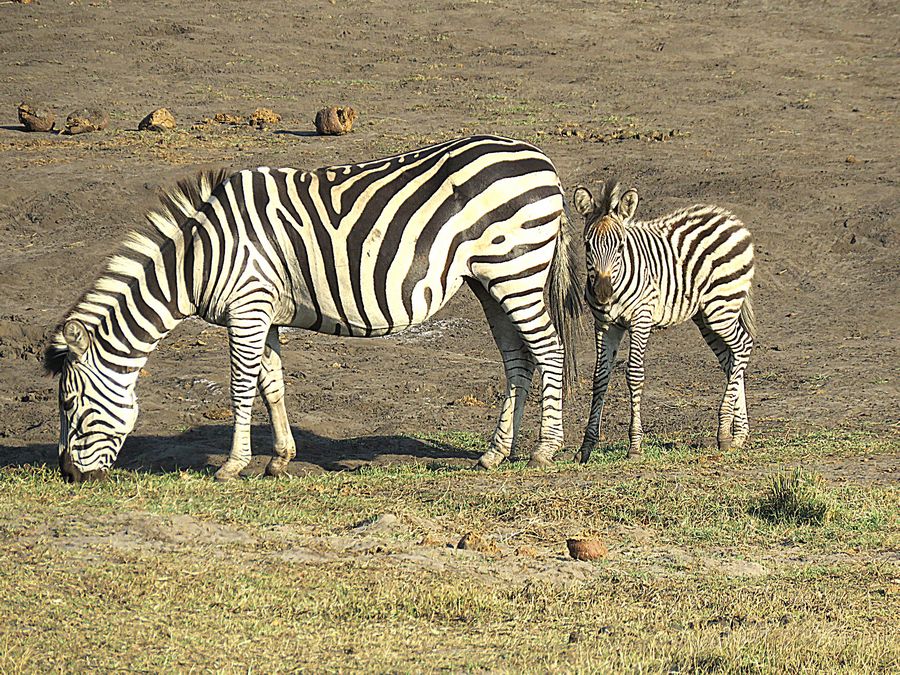
By one year of age, foals are able to be independent. Some males will join a group
of other young males by this time,
but it is not uncommon for a young zebra
to remain with his original family herd for up to four years. Zebras reach sexual
maturity at 16 to 22 months of age. Zebras in the wild live an average of nine years.
Sadly, there is a 50 percent average mortality rate for foals, due in large part to
such predators as lions, hyenas, cheetahs, leopards and painted dogs.
In captivity, the life span for a zebra extends to 20 to 40 years.
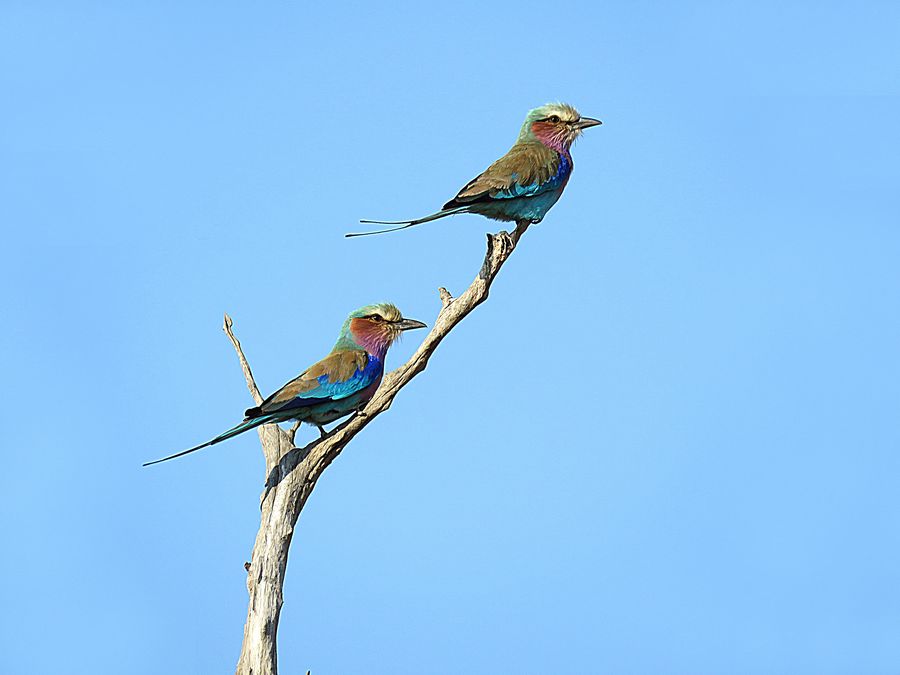
A pair of lilac-breasted rollers
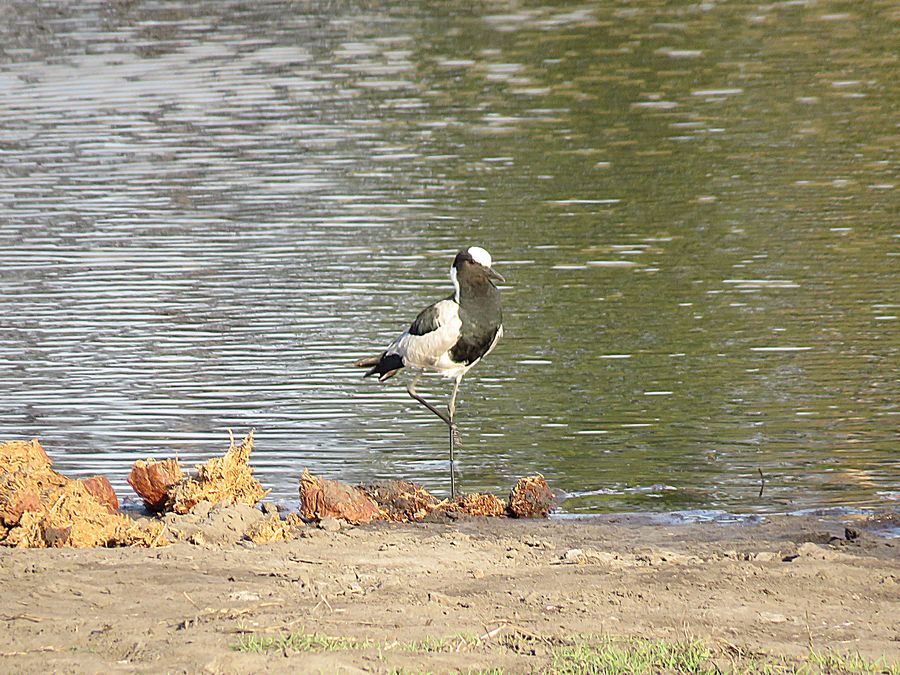
Blacksmith Lapwing - found on margins of water bodies
and short grassland areas. We also saw them at Kruger NP.
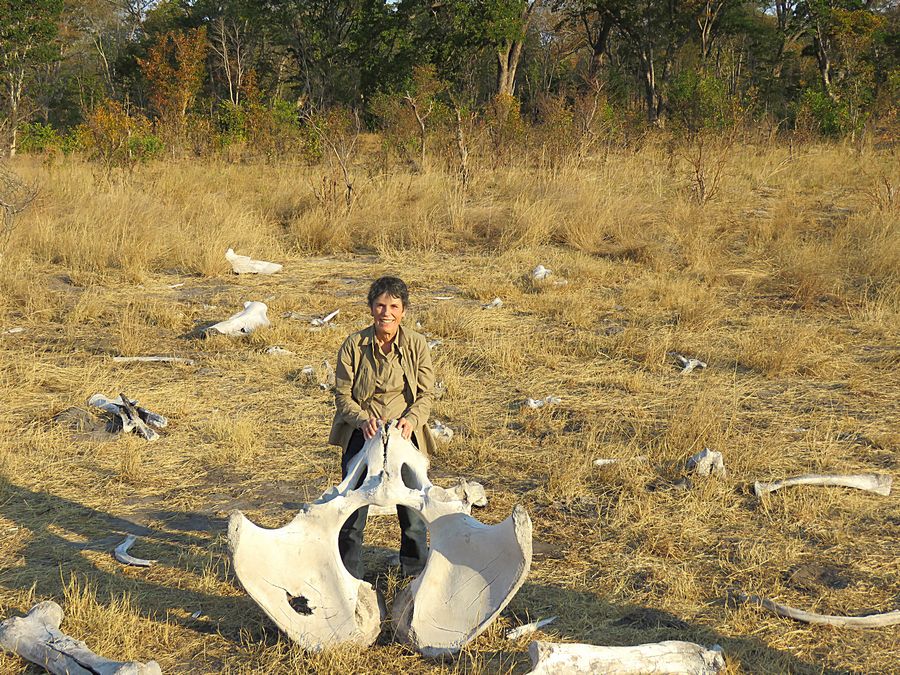
Me holding pelvic bone of an old elephant that had
died naturally. The bones were scattered around this area.
The bone was quite heavy.
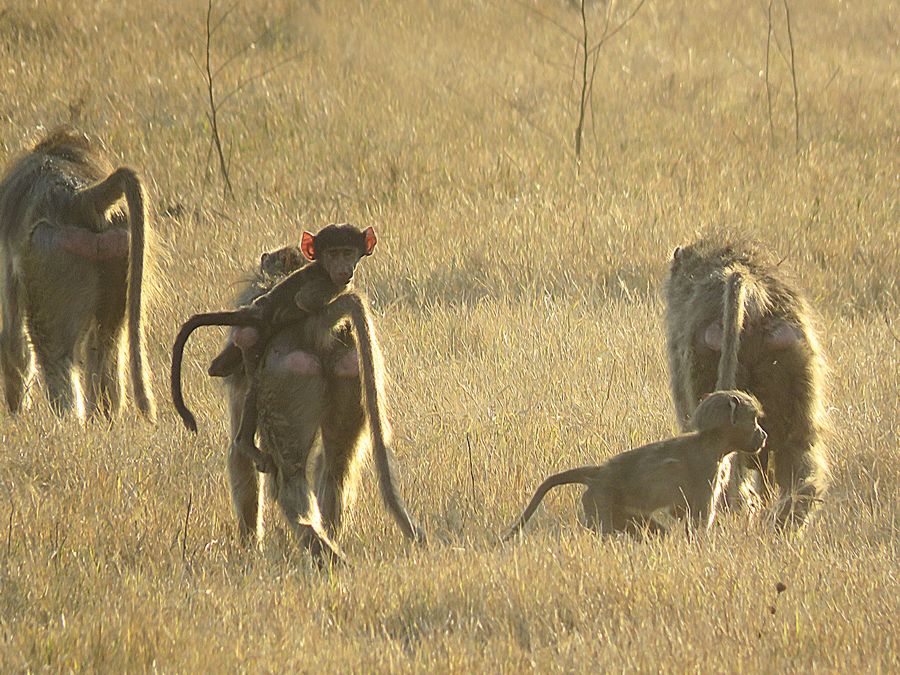
The bright sun makes it hard to see these baboons
walking away from us. Note the young catching rides.

Male elephant near some of the rondavels at Sable Sands Lodge.
Note his reflection in the water.
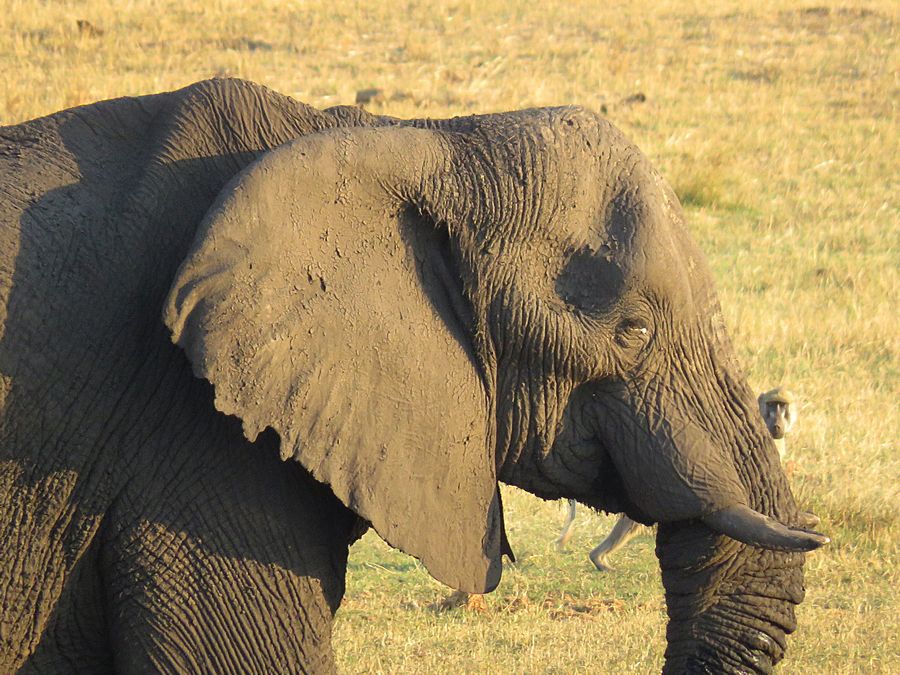
Note the nearby baboon behind the elephant.
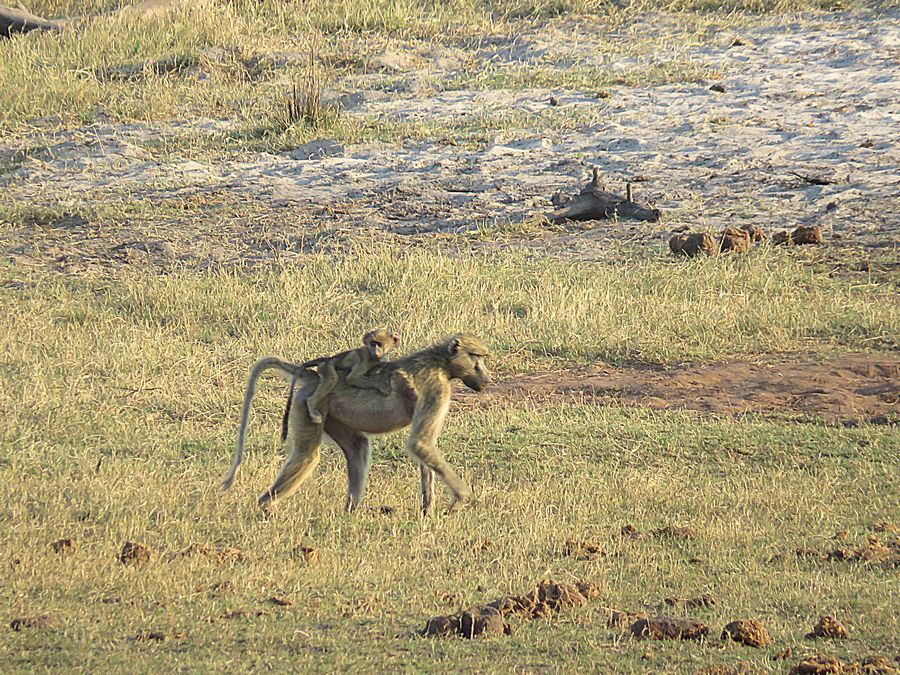
Baby baboon (called an infant) riding on its mom's back.
A baboon female gives birth to just a single young after about 178 days, a little less
than six months.
They tend to give birth at night. The baboon group
is on the move traveling and foraging for food on the ground most of the day,
whereas it is settled in the greater safety of trees or cliffs at night.
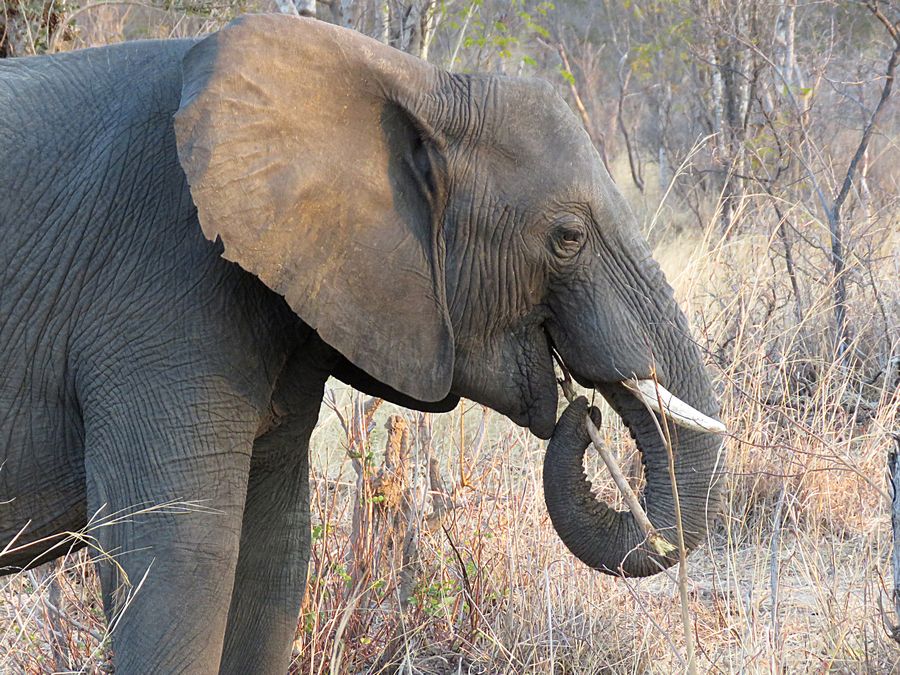
Male elephant feeding not far from the very sandy road
we were on.
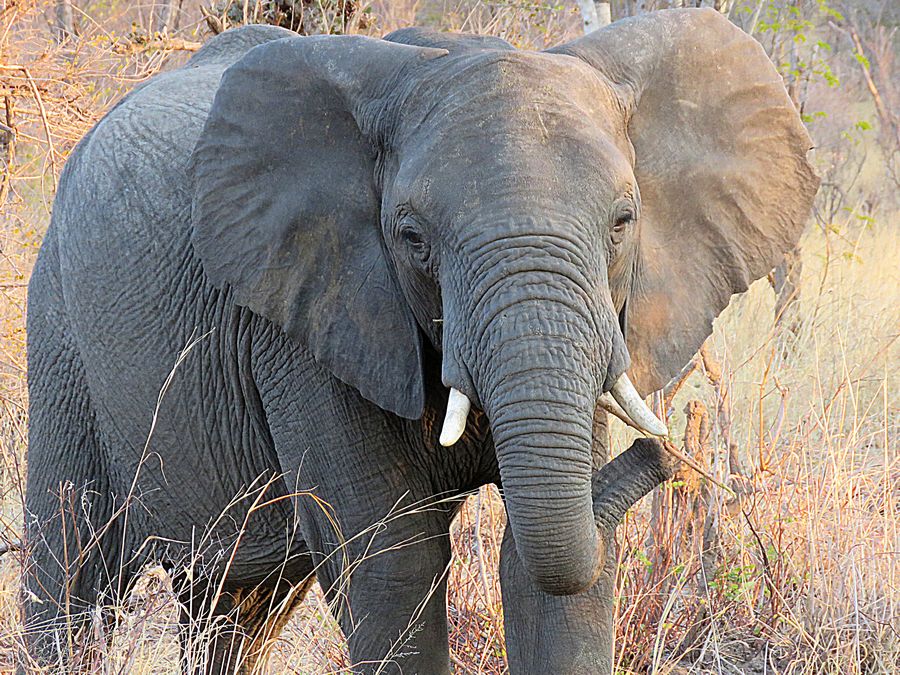
This male elephant grew tired of us looking at him and
did a mock charge toward the vehicle. We respected
his wish and drove off.

Nearing the end of late afternoon game drive when
sun was setting.

The female lion we had seen earlier in the day at a kudu
carcass was back next to the carcass in the evening.
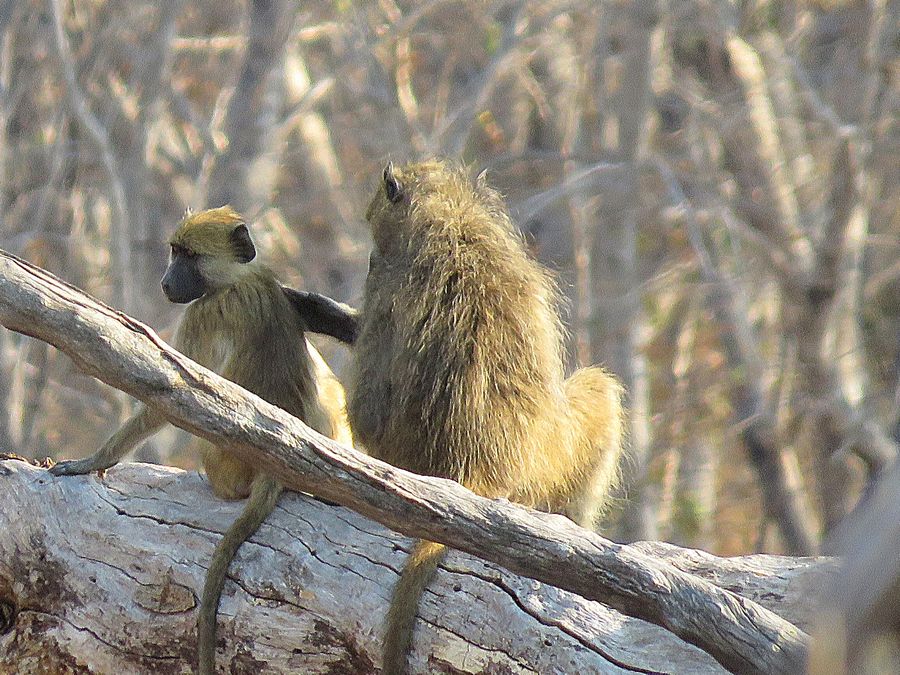
Baboons interacting in the woods

You may have heard that a large group of baboons is called a Congress.
Not only is this wrong; it is very disrespectful to baboons. A group
of baboons is called a troop.
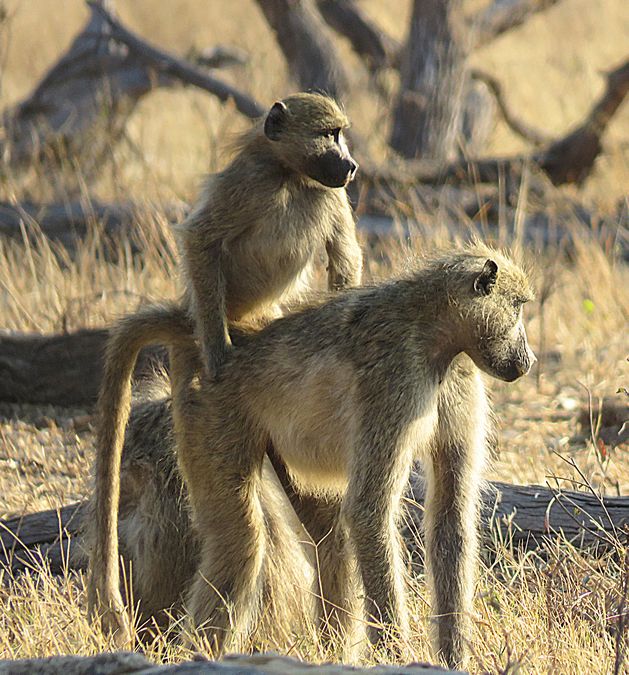

Bradfield's Hornbill - gray brown head with a reddish orange bill.
They feed on fruits,
large insects, nuts and small reptiles.

Closer view of Bradfield's Hornbill
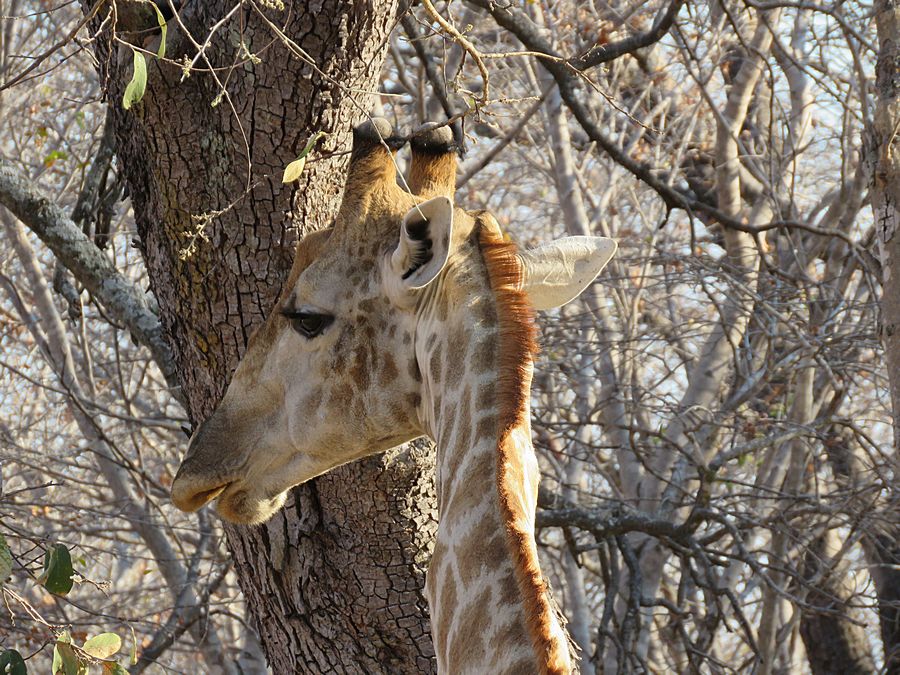
Giraffe's head from the rear. This is a male giraffe.

African tree squirrel - common in drier savannah grasslands
and woodlands in north and northeastern southern Africa.
The tail is bushy and almost as long as the body. Usually seen
singly or in pairs, scampering along the ground from tree to
tree, feeding on plant material and occasionally on insects.
Smaller than our squirrels.
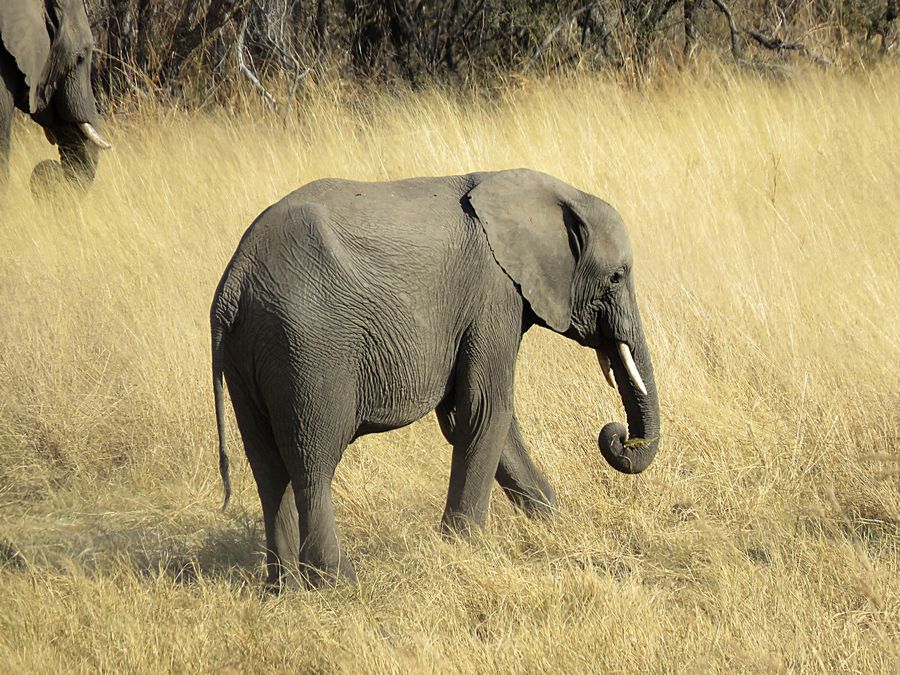
At a minimum, the African elephant calf is entirely dependent
(emotionally and physically) on his/her mother for three to five years.
Link to Part Three, Page Three - Hwange National Park, Zimbabwe
Pat's Home Page